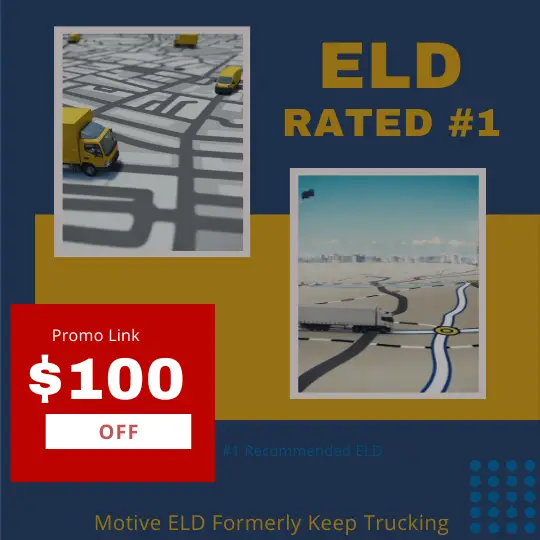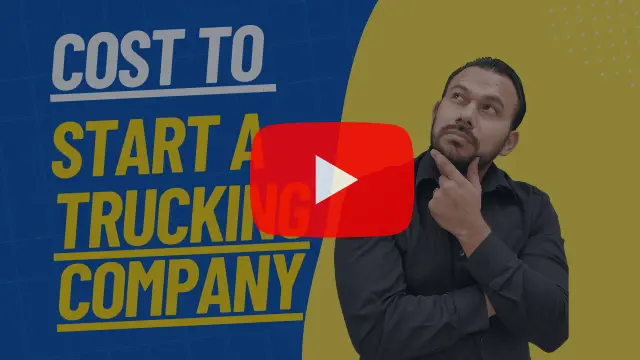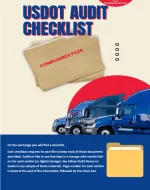How To Get Your USDOT And MC Number In New York
Starting a trucking business in New York involves several crucial steps, including obtaining your USDOT and MC numbers. These numbers are essential for compliance with federal and state regulations, enabling you to operate legally as a commercial carrier. This guide outlines the process to secure your USDOT and MC numbers in New York, ensuring a smooth start to your trucking business.
Understanding USDOT and MC Numbers
What Is a USDOT Number?
A USDOT number is a unique identifier issued by the Federal Motor Carrier Safety Administration (FMCSA) for tracking a company’s safety and compliance records. It is mandatory for companies operating commercial vehicles involved in interstate commerce. Moreover, it plays a significant role in maintaining safety standards across the industry.
What Is an MC Number?
An MC number, or operating authority, allows for-hire carriers to transport goods or passengers across state lines. Furthermore, this number signifies compliance with federal regulations governing commercial transportation, making it a critical step for trucking businesses.
Why You Need USDOT and MC Numbers
- Legal Compliance: Required for operating commercial vehicles in interstate commerce.
- Safety Tracking: Helps the FMCSA monitor your compliance with safety regulations.
- Business Opportunities: Enables your company to legally transport goods for profit across state lines. Consequently, obtaining these numbers is a must for expanding your business reach.
Guide To Getting Your USDOT And MC Numbers In New York
- Register Your Business
Before applying for a USDOT or MC number, register your business as a legal entity in New York. Choose a structure such as an LLC, corporation, or partnership. Additionally, visit New York state resources to guide you through the business registration process.
- Apply for a USDOT Number
Visit the FMCSA website and complete the USDOT application. You’ll need the following:
- Employer Identification Number (EIN)
- Vehicle information (e.g., weight and classification)
- Type of cargo you plan to transport
By preparing these documents beforehand, you can ensure a smoother application process.
- Apply for an MC Number
File Form OP-1 through the FMCSA’s Unified Registration System (URS). This step requires specifying your business operations and paying the $300 filing fee. Moreover, ensuring accuracy in your application will help prevent delays.
- Obtain Insurance Coverage
Secure liability and cargo insurance that meets FMCSA requirements. File Form BMC-91 or BMC-91X with the FMCSA to verify coverage. Additionally, consider consulting with insurance providers experienced in the trucking industry to find the best options.
- File Form BOC-3
Designate a process agent for each state where you operate by filing Form BOC-3. This agent will handle legal documents on your behalf. As a result, you can focus more on business operations without worrying about compliance complications.
- Register for IFTA and IRP
For interstate operations, register for the International Fuel Tax Agreement (IFTA) and the International Registration Plan (IRP). New York-specific resources include:
These registrations ensure proper tax allocation and vehicle registration compliance.
- Apply for New York Intrastate Authority
If you plan to operate solely within New York, you must also apply for intrastate authority. Visit the New York DOT Trucking Page to complete your application and understand the state’s specific requirements.
- Prepare for the New Entrant Safety Audit
All new carriers must undergo a safety audit within their first 18 months of operation. Ensure compliance with record-keeping, driver qualifications, and vehicle maintenance. Importantly, being proactive about these requirements can prevent penalties or delays.
Need Help Obtaining Your Permits?
Get Your Trucking Authority Today!
We Can Help You Setup Your USDOT & MC Number.
Speak With Our Experienced Permit Professionals That Can Help You Every Step Of The Way.
Call Us Today! Live Agents Are Standing By.
Types Of Motor Carrier Authority You Can Obtain with An MC Number
When applying for an MC number, it’s important to choose the correct type of operating authority. Consequently, understanding these options ensures your application aligns with your business model.
Motor Carrier of Property (Except Household Goods)
This authority is for for-hire carriers transporting regulated commodities (excluding household goods) for the general public. Requirements include filing proof of public liability insurance (bodily injury and property damage – BI & PD) with the FMCSA. Cargo insurance is not required.
Motor Carrier of Household Goods (HHG)
Designed for moving companies, this authority allows the transportation of household goods, which are personal items used in homes. In addition to public liability insurance, carriers must file proof of cargo insurance with the FMCSA. Services like packing, unpacking, and loading/unloading at residences are often included.
Broker of Property (Except Household Goods)
Brokers arrange the transportation of property (excluding household goods) by authorized motor carriers. Importantly, brokers do not take possession of the goods and are not responsible for them.
Broker of Household Goods (HHG)
This authority is for individuals or companies arranging the transportation of household goods by authorized carriers. Brokers must meet requirements similar to those for household goods motor carriers, including facilitating packing and unpacking services.
Additional Types of Authorities
- Freight Forwarder Authority
- Motor Passenger Carrier Authority
- Non-North America-Domiciled Motor Carriers
For more details on each authority, visit the FMCSA Types of Operating Authority page.
Common Mistakes When Applying for USDOT and MC Numbers
- Incomplete Applications: Ensure all forms are accurate and complete. Therefore, double-check your entries before submission.
- Insurance Gaps: Verify that your coverage meets federal requirements. Otherwise, your application might face delays.
- Missed Deadlines: Stay on top of application and renewal timelines to avoid penalties.
- Neglecting Compliance Audits: Prepare thoroughly for the new entrant safety audit. This ensures a hassle-free review process.
- Ignoring Networking Opportunities: Building connections with experienced brokers and dispatchers can streamline your operations and paperwork management.
- Underestimating the Importance of Experience: Hiring services with proven industry expertise, like ours, ensures your success by avoiding costly mistakes and improving efficiency.
Networking for Success
The trucking industry thrives on strong relationships and reliable partners. To manage your load boards and paperwork efficiently, consider:
- Working with Experienced Brokers and Dispatchers: These professionals can help you secure profitable loads and handle essential paperwork. Consequently, you can focus on expanding your business.
- Joining Industry Groups: Networking with other trucking professionals provides valuable insights and opportunities.
- Partnering with Experts: Our team has over a decade of experience in the trucking industry, making us a trusted partner for your business needs.
Trucking Authority Services
Our Additional Services
We offer a comprehensive range of services to support your trucking business:
- MC Number Application: Facilitates interstate operations.
- BOC-3 Filing: Mandatory for activating your authority.
- Unified Carrier Registration (UCR): Ensures compliance for interstate carriers.
- Form 2290 Filing: Helps meet IRS Heavy Vehicle Use Tax (HVUT) requirements.
- IFTA Registration and Quarterly Filings: Simplifies fuel tax reporting.
Business Formation Services
- New Business Setup: Assistance with forming corporations, LLCs, or partnerships tailored to your trucking needs. Learn more in our LLC for Trucking Company Guide.
State-Specific Permits
- New York Intrastate Authority: Includes obtaining necessary permits and understanding state requirements.
- New York IFTA Registration: Simplifies fuel tax reporting for New York-based carriers.
- New York Apportioned Registration: Facilitates multi-state vehicle registration for commercial vehicles.
Explore our complete range of services here: Trucking Authority and Permit Services.
FAQs About USDOT And MC Numbers In New York
- How long does it take to get a USDOT number? The application process is typically completed within a few business days. However, preparing your documents beforehand can speed up the process.
- What is the cost of obtaining an MC number? The filing fee for an MC number is $300. Additionally, you may incur other costs, such as insurance.
- Do I need both a USDOT and MC number? Yes, if you’re operating a for-hire trucking business across state lines. Moreover, both are critical for legal compliance.
- Can I apply for these numbers on my own? Yes, but many carriers choose to work with specialists to ensure accuracy and efficiency.
- Is insurance mandatory for an MC number? Yes, liability and cargo insurance are required to activate your authority.
- What is a BOC-3 filing? This form designates a process agent for handling legal documents, ensuring compliance with federal requirements.
- What happens if my application is denied? You can address the issues cited and reapply. Importantly, reviewing your application thoroughly before submission can help avoid this.
- How do I update my USDOT information? Use the FMCSA’s online portal to update details such as address or operational changes. Additionally, ensure updates are made promptly to avoid penalties.
- What is the New Entrant Safety Audit? A mandatory audit for all new carriers within their first 18 months of operation. Moreover, this ensures compliance with federal safety standards.
- What is the IFTA? The International Fuel Tax Agreement simplifies fuel tax reporting for interstate carriers. Additionally, it helps allocate fuel taxes fairly across states.
Next Steps
Securing your USDOT and MC numbers is the first step toward establishing a successful trucking business in New York. By following this guide, building a strong network, and leveraging the resources available, you can ensure compliance and focus on growth. For expert assistance, visit TruckersAuthority.com.







